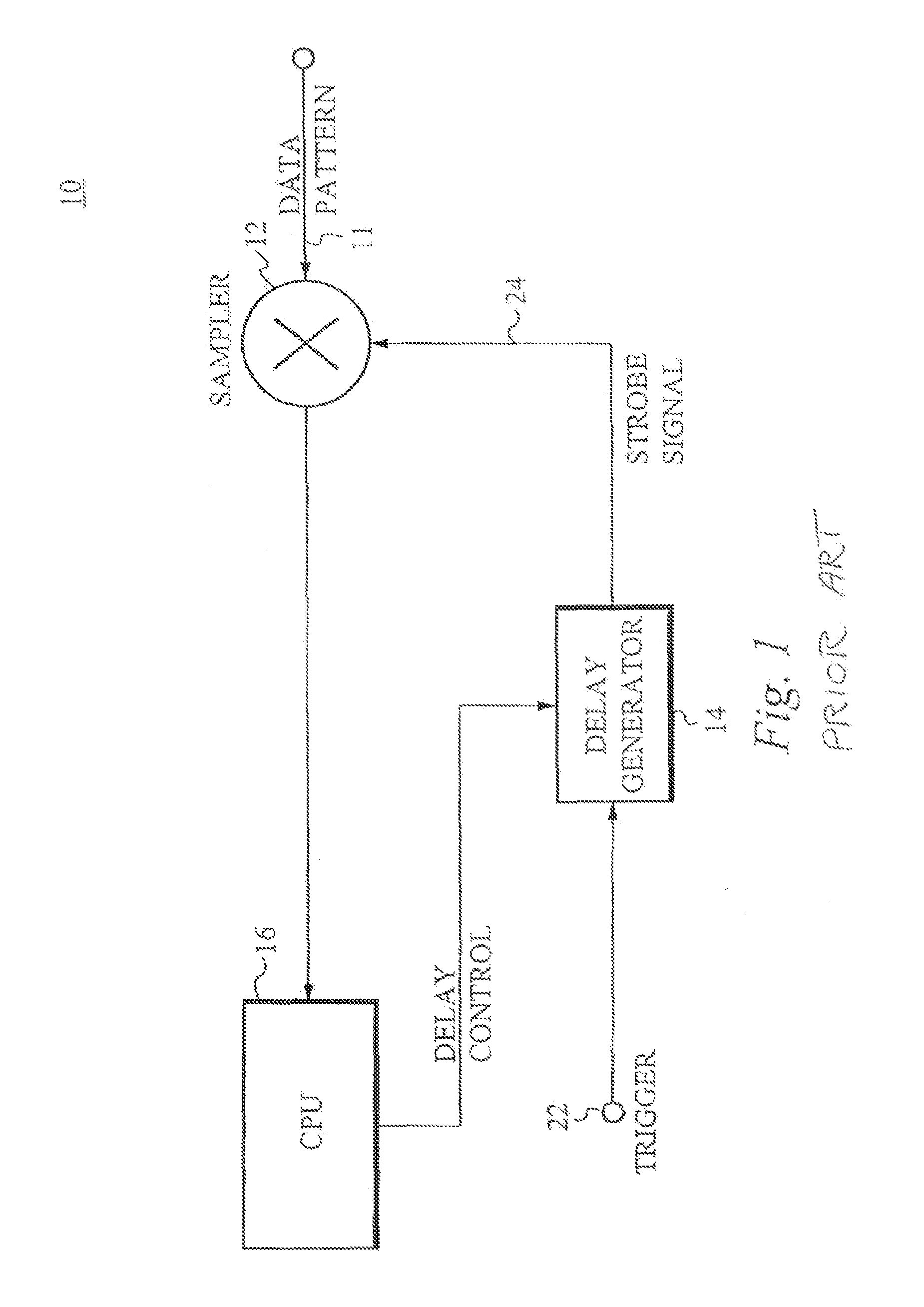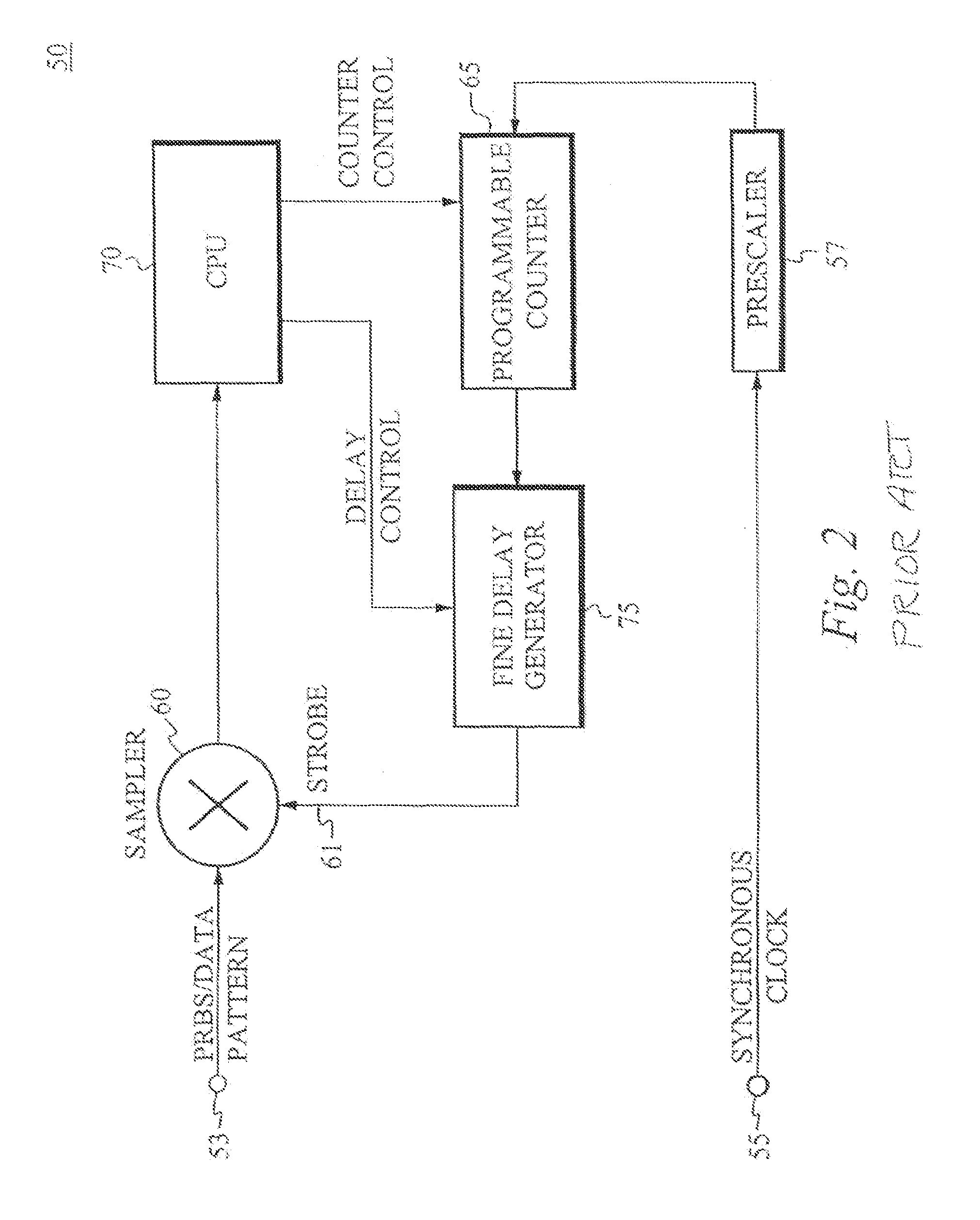Method of and apparatus for measuring jitter and generating an eye diagram of a high speed data signal
a high-speed data and eye diagram technology, applied in the direction of generating/distributing signals, instruments, horology, etc., can solve the problems of receiving signals at a non-optimal sampling point, various forms of jitter not well characterized with eye diagrams, and case errors in the transmission of data
- Summary
- Abstract
- Description
- Claims
- Application Information
AI Technical Summary
Benefits of technology
Problems solved by technology
Method used
Image
Examples
Embodiment Construction
[0023]The present invention discloses a method and apparatus for analyzing high-speed data signals and arranging the analyzed data. In general, the present invention performs sampling of incoming signals by utilizing a synthesized signal generated from the reference clock frequency and a counter to generate sampler strobe signals. The present invention uses a technique for arranging the sampled data to form an eye diagram. The timing of the sample events is preferably controlled by the programmable output frequency of a Direct-Digital-Synthesizer (DDS) and the count interval of a programmable counter. To perform an eye-diagram measurement, the DDS output is set to a frequency that is a fraction of the clock frequency. This frequency is chosen such that appropriate arrangement of the sample points produces an eye diagram having the desired resolution. In addition, the present invention is capable of measuring the Duty Cycle Distortion (DCD) and Intersymbol Interference (ISI) jitter o...
PUM
 Login to View More
Login to View More Abstract
Description
Claims
Application Information
 Login to View More
Login to View More - R&D
- Intellectual Property
- Life Sciences
- Materials
- Tech Scout
- Unparalleled Data Quality
- Higher Quality Content
- 60% Fewer Hallucinations
Browse by: Latest US Patents, China's latest patents, Technical Efficacy Thesaurus, Application Domain, Technology Topic, Popular Technical Reports.
© 2025 PatSnap. All rights reserved.Legal|Privacy policy|Modern Slavery Act Transparency Statement|Sitemap|About US| Contact US: help@patsnap.com



